
Ink wash painting ; is a type of Chinese ink brush painting which uses washes of black ink, such as that used in East Asian calligraphy, in different concentrations. It emerged during the Tang dynasty of China (618–907), and overturned earlier, more realistic techniques. It is typically monochrome, using only shades of black, with a great emphasis on virtuoso brushwork and conveying the perceived "spirit" or "essence" of a subject over direct imitation. Ink wash painting flourished from the Song dynasty in China (960–1279) onwards, as well as in Japan after it was introduced by Zen Buddhist monks in the 14th century. Some Western scholars divide Chinese painting into three periods: times of representation, times of expression, and historical Oriental art. Chinese scholars have their own views which may be different; they believe that contemporary Chinese ink wash paintings are the pluralistic continuation of multiple historical traditions.

Ye is a Chinese-language surname. It is listed 257th in the Song dynasty classic text Hundred Family Surnames, and is the 43rd most common surname in China, with a population of 5.8 million as of 2008 and 2019.
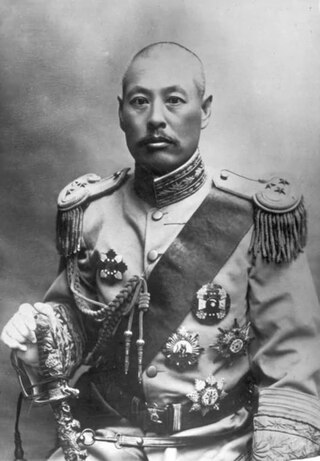
Wu Peifu was a Chinese warlord and major figure in the Warlord Era in China from 1916 to 1927.

Huang Shen (1687–1772) was a Chinese painter during the Qing Dynasty. Huang was born in Ninghua, Fujian province, to a poor family. His courtesy names were Gongshou (恭壽) and Gongmao (恭懋). His pseudonym was Yingpiaozi (癭瓢子).
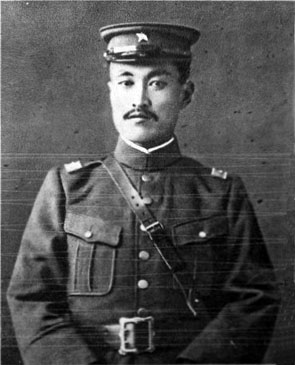
Guo Songling was a Chinese general who served in the Fengtian Army under Zhang Zuolin during the Chinese Warlord Era. A republican sympathiser who briefly served under Sun Yat-Sen, he was a teacher of and an important influence on Zhang Zuolin's son, Zhang Xueliang. Citing desire to avoid civil war, he led a three-month rebellion against Zhang Zuolin which led to his defeat and execution.

The Warlord Era was a period in the history of the Republic of China when control of the country was divided among former military cliques of the Beiyang Army and other regional factions from 1916 to 1928.
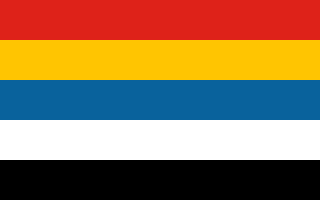
The Beiyang government was the internationally recognized government of the Republic of China between 1912 and 1928, based in Beijing. It was dominated by the generals of the Beiyang Army, giving it its name.

Hong Yi, or Yan Yin, born Li Shutong was a Chinese artist, musician, art teacher, and Buddhist monk. He also went by the names Wen Tao, Guang Hou, and Shu Tong, but was most commonly known by his Buddhist name, Hong Yi.
The Second Zhili–Fengtian War of 1924 was a conflict between the Japanese-backed Fengtian clique based in Manchuria, and the more liberal Zhili clique controlling Beijing and backed by Anglo-American business interests. The war is considered the most significant in China's Warlord era, with the Beijing coup by Christian warlord Feng Yuxiang leading to the overall defeat of the Zhili clique. During the war the two cliques fought one large battle near Tianjin in October 1924, as well as a number of smaller skirmishes and sieges. Afterwards, both Feng and Zhang Zuolin, the latter being ruler of the Fengtian clique, appointed Duan Qirui as a figurehead prime minister. In south and central China, more liberal Chinese were dismayed by the Fengtian's advance and by the resulting power vacuum. A wave of protests followed. The war also distracted the northern warlords from the Soviet-backed Nationalists based in the southern province of Guangdong, allowing unhampered preparation for the Northern Expedition (1926–1928), which united China under the leadership of Chiang Kai-shek.
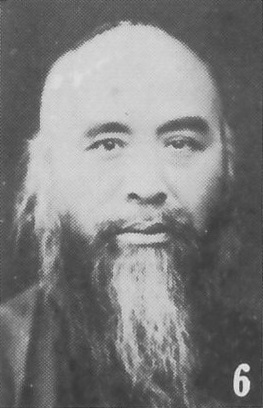
Yu Youren ; was a Chinese educator, scholar, calligrapher, and politician.

Chen Hongshou, formerly romanized as Ch'en Hung-shou, was a Chinese painter of the late Ming dynasty.
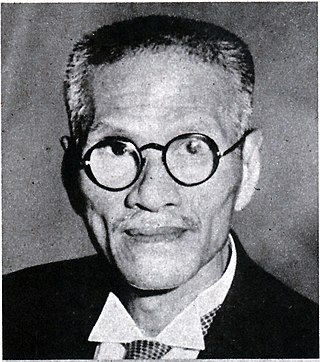
Wang Kemin was a leading official in the Chinese republican movement and early Beiyang government, later noted for his role as in the collaborationist Provisional Government of the Republic of China and Wang Jingwei regime during World War II.

Ong Schan Tchow alias Yung Len Kwui was born in the ethnically Hokkien city in the eastern part of Longyan prefecture, Southern Fujian Province, China. He was well known for Chinese Ink wash painting and colour paintings of flowers, landscapes, animals, people, still life and Calligraphy. He was regarded as one of the first few batches of Chinese scholars and artists to study in Paris and one of the few artists who integrated both traditional Chinese and Western art techniques. During the Second Sino-Japanese War, he became renowned as a patriot artist when he exhibited extensively in China, Hong Kong and later in South East Asia to raise funds solely for the war relief effort and for the countless Chinese civilian victims in China, Malaysia and Singapore.

Chao Ho was the lead ship of a class of her class of training protected cruisers originally built for the Manchu Qing Dynasty.

Ye Qianyu was a Chinese painter and pioneering manhua artist. In 1928, he cofounded Shanghai Manhua, one of the earliest and most influential manhua magazines, and created Mr. Wang, one of China's most famous comic strips.

Ye Zhemin, also romanized as Yeh Che-min, was a Chinese art historian and authority on the history of Chinese ceramics and calligraphy. He is credited with making a discovery that led to the identification of Qingliangsi as the kiln site for the rare Ru ware of the Song dynasty. His published works include the extensive History of Chinese Pottery and Porcelain.

The National Pacification Army (NPA), also known as the Anguojun or Ankuochun, was a warlord coalition led by Fengtian clique General Zhang Zuolin, and was the military arm of the Beiyang government of the Republic of China during its existence.

Gao Qifeng was a Chinese painter who co-founded the Lingnan School with his older brother Gao Jianfu and fellow artist Chen Shuren.

The True Record was a pictorial magazine published in Shanghai, China, between June 1912 and March or April 1913. Established by brothers Gao Qifeng and Gao Jianfu as the nascent Republic of China was seeking to develop a new culture after centuries of Qing rule, it sought to monitor the new republic, report the welfare of the people, promote socialism, and distribute world knowledge. Under the Gaos and fellow editor Huang Binhong, the magazine published seventeen issues and expanded its reach from China through Southeast Asia and Hawaii. Fervently supportive of Sun Yat-sen and the nationalist movement, the magazine was critical of Provisional President Yuan Shikai and closed during a time when he was consolidating his power.
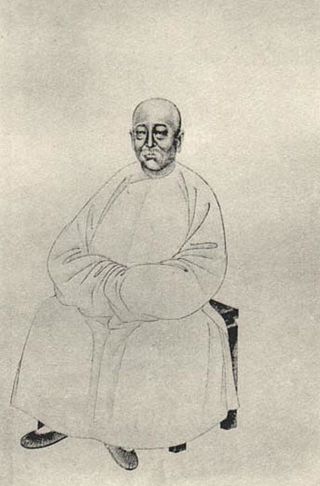
Ye Yanlan was a Chinese poet, painter, calligrapher, and official in the Qing dynasty. Born in Panyu County, Guangdong, he attended the Yuehua Academy and Xuehai Academy before taking the imperial examination, earning the title of juren in 1852 and the title of jinshi in 1856. Before his retirement in 1882, he had worked at the Hanlin Academy and headed the Ministry of Revenue. He spent his post-retirement career as a teacher at the Yueha Academy.




















